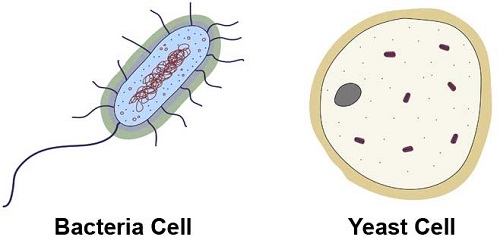
Introduction:
The Zygomycota are a group of organisms in the kingdom Fungi. There are many types of fungi but the Zygomycota are the type that includes the bread molds. Before discussing the details of how these fungi reproduce it is useful to learn more about how to recognize them and where you can find them. Read on to learn more about the Zygomycota including the characteristics and economic significance of these fungi.
What are the characteristics of Zygomycota?
The Zygomycota have a vegetative body called the thallus, which is made up of branching filaments (hyphae). There are no cell walls inside the hyphae so there is no division into compartments. This lack of internal divisions or septa inside hyphae is called a coenocytic state.
Another interesting fact about Zygomycota fungi is that these organisms make chitosan from chitin. This chitosan is then incorporated into the cell wall along with other molecules such as glucans and glycoproteins. The chitosan is made using enzymes called chitinases which act on chitin transforming it into chitosan.
What type of fungi is Zygomycota?
These fungi are commonly referred to as bread molds, and they do include the common bread mold Rhizopus stolonifera. The fungi placed in the phylum Zygomycota have since been divided into two separate phyla. The two new phyla are the Zoopagomycota and also the Mucoromycota.
How do you identify Zygomycota?
There are some features of this type of fungus that can help in identification. While the diagnosis may be suspected based on where the fungi are found, microscopic methods are the only way to positively identify the Zygomycota. Experts can sometimes also identify the actual species that is found.
Diagnostic features to look for on a microscopic slide of a piece of the fungus are as follows:
- The presence of coenocytic hyphae.
- The presence of a zygospore – a specific type of reproductive structure unique to the Zygomycota, which is produced in zygosporangia.
How do Zygomycota reproduce asexually?
Zygomycota have asexual reproduction when environmental conditions are good
During the asexual part of reproduction, the Zygomycota develop aerial hyphae that extend upwards above the substrate.
The steps of asexual reproduction are given below.
- The fungus produces two types of special reproductive structures known as zygosporangia and mitosporangia.
- Each mitosporangium then forms a series of spores known as mitospores.
- The mitospores are haploid (n), meaning they contain half the number of chromosomes as in the diploid (2n) state of the fungus.
- Mitospores are produced by mitotic cell divisions.
- These mitospores are released from the sporangium.
- Each of these special spores can then grow into a hypha.
How do Zygomycota reproduce sexually?
The fungi will switch to sexual reproduction when conditions in the environment change to unfavorable.
The steps of sexual reproduction are provided below.
- A Zygomycota fungus often secretes chemicals that enables it to communicate with nearby fungi.
- The mycelia of two separate fungal organisms of the same species may respond to such chemical cues triggering them both to branch out.
- This happens by the hyphae of each fungus growing in the direction of the new fungal body.
- Where the two hyphae meet, a septum is formed in each section of each hypha.
- This walled-off section is called a gametangium and contains many (n) nuclei.
- Eventually the separation between the two fungal hyphae dissolves.
- The cytoplasm of both fungal organisms fuses in a process called plasmogamy,
- Karyogamy then takes place. This is when the nuclei of separate fungi fuse to form (2n) nuclei.
- A thick structure grows around this part of the two fungi to form a zygosporangium.
- This entire process is called fungal conjugation.
- In the zygosporangium the fused nuclei are known as (2n) zygospores.
- These zygospores divide by meiosis to form (n) spores that are genetically unique.
- The zygosporangium produces another sporangium that then releases these (n) spores.
- Where spores land, a new fungal mycelium grows.
Where do most Zygomycota live?
Zygomycota is a category that includes fungi that live on land unlike some other kinds of fungi like the slime molds, which live in water. The Zygomycota typically grows on the surfaces of bread, vegetables, and fruits.
These fungi put down hyphae into the substrate they colonize. The fungus then secretes enzymes onto the substrate to begin breaking down the material. They release a variety of enzymes to accomplish digestion. They then take up the digested nutrients of the substrate through the hyphae.
They are saprophytic organisms that are commonly found on decaying plant material in the environment. In nature, this makes these fungi useful recyclers of nutrients from dead matter. Like all fungi, Zygomycota is an important group of organisms in nature, playing a role in ecosystems but they can become problematic in the food industry.
The economic significance of the Zygomycota
It is because of where Zygomycota occur that food producers have developed methods to prevent fruit and vegetable spoilage by these fungi.
In fact, Rhizopus rot is a common problem that results in the spoilage of food items. The roots of vegetables like beets can also be impacted and lost due to Rhizopus fungus.
Who mummified the bodies?
Several civilizations mummified bodies, including the Incas, Chinese, and Egyptians. Artificial mummification involves desiccating a body and sometimes adding substances to the corpse to preserve it. Natural mummification can also happen where there are extreme conditions such as where temperatures are very low or the air is very dry.
Interestingly, mummified vertebrates can sometimes show evidence of Zygomycota colonization. For example, a Zygomycota fungus was found on the mummified remains of a Norway Lemming. The lemming was found in a glacier in Norway and was well preserved enough that even the remains of a Zygomycota fungus could be seen.
Summary
The Zygomycota are a group of fungi often called the bread molds. They occur in terrestrial environments on fruits and bread. Some of these molds are economically important because they can colonize vegetables and fruits contributing to rot and decay. The Zygomycota are able to change between sexual and asexual reproduction depending on the conditions in the environment.












Leave a Reply